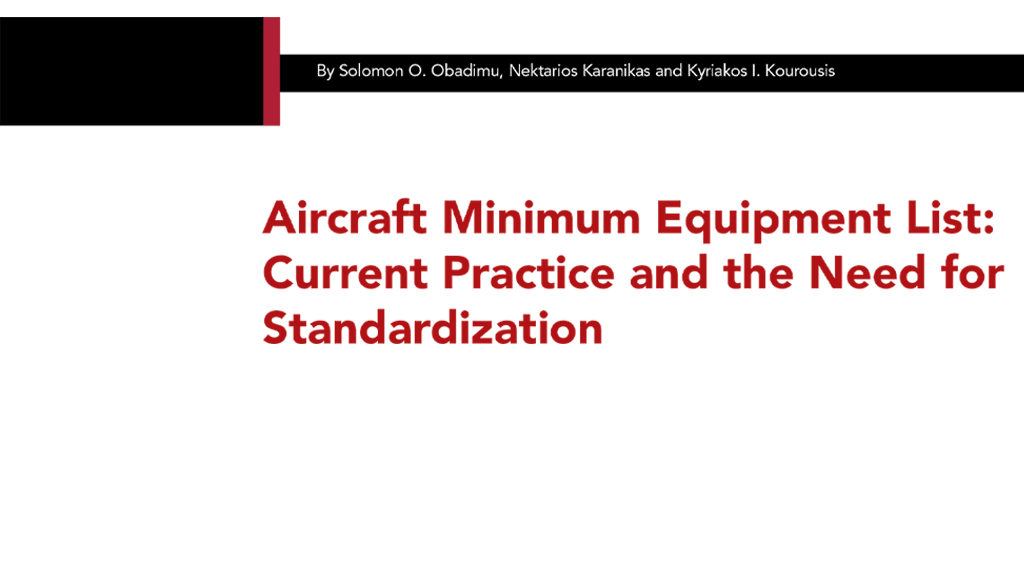Introduced in the late 1960s as part of airworthiness requirements, the aircraft minimum equipment list (MEL) is a document with a list of aircraft components or systems that may be inoperable for dispatch. Prior to the use of MEL, aircraft dispatch was a topic of negotiation between aircraft operators and regulators. Have things around the aircraft MEL changed since its institutionalization? Can we still rely on non-standardized and reportedly ambiguous guidelines to manage this airworthiness topic under the ever-increasing complexity of modern aircraft and the dynamic environment within they operate? This article provides a summary of the current state of this very important airworthiness matter.

Aircraft manufacturers produce the master minimum equipment list (MMEL), and operators are required to develop their MELs based on the master document. While this approach is acceptable, the complexity of operating modern aircraft systems in diverse environments and mission profiles requires a more systematic approach. In recent years, the MEL has been a topic of discussion for both researchers and aviation professionals, and the reliability of the document has been questioned. In fact, it has been postulated that there is a need for a systematic approach to MEL development and approval.
Several principles govern the justification, approval, and management of the MEL document. Amongst others, the MEL must be more restrictive than the MMEL and must be developed based on the environment the aircraft would be operated. Regardless of the differences in MMEL development and approval process in different regions, acceptability and technical accuracy of the document is checked by the stakeholders (such as safety and airworthiness personnel) involved in the process. They review and analyze the items/equipment listed whilst considering environmental and human factors, the reliability, and acceptable level of safety of each component/system. Figure 1 depicts the MEL development and approval process. During this phase, a thorough analysis is conducted before including a system/component in the list using techniques and tools such as Fault Tree Analysis (FTA) and Failure Mode and Effects Analysis (FMEA). While these tools have proved useful and yield satisfactory outcomes, they are still limited because they are linear and do not consider the interactions between humans and machines.

To understand the current state of this important airworthiness topic and also validate the need for a standardized approach, we reviewed MEL related literature, analyzed safety investigation reports of MEL-related events to detect current practice and issues that can affect the MEL development and use and warranty interventions. Figure 2 provides a summary of the MEL events reviewed. Aircraft dispatch against MEL requirements topped the list at 50%, followed by cases of operating aircraft without an approved MEL at 17%. Also, ambiguous and incomplete MEL-related cases accounted for 21%, while human error/decision making regarding MEL application and management was at 12%. In addition, amongst others, the literature reviewed revealed that:
- A holistic approach is required to streamline the development of a MEL framework and also manage the document.
- An engineer/pilot type-rated on an aircraft does not guarantee the correct interpretation of the aircraft’s MEL.
- There is a need for prior airworthiness experience and MEL compliance training in order to properly apply and manage the MEL.
The aforementioned challenges present an opportunity to conduct further research into MEL. The MEL development process is dynamic and requires a combination of quantitative and qualitative approaches that encompass socio-technical and systems engineering principles. This will comprise the basis for a holistic and systematic methodology for MEL development and management.
The full article of this study can be viewed and downloaded for free on the website of the MDPI Aerospace journal at: https://www.mdpi.com/2226-4310/7/1/7. This article belongs to the Special Issue “Civil and Military Airworthiness: Recent Developments and Challenges.”
